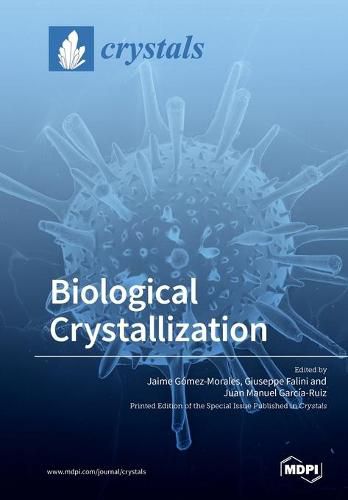Readings Newsletter
Become a Readings Member to make your shopping experience even easier.
Sign in or sign up for free!
You’re not far away from qualifying for FREE standard shipping within Australia
You’ve qualified for FREE standard shipping within Australia
The cart is loading…






This title is printed to order. This book may have been self-published. If so, we cannot guarantee the quality of the content. In the main most books will have gone through the editing process however some may not. We therefore suggest that you be aware of this before ordering this book. If in doubt check either the author or publisher’s details as we are unable to accept any returns unless they are faulty. Please contact us if you have any questions.
For at least six hundred million years, life has been a fascinating laboratory of crystallization, referred to as biomineralization. During this huge lapse of time, many organisms from diverse phyla have developed the capability to precipitate various types of minerals, exploring distinctive pathways for building sophisticated structural architectures for different purposes. The Darwinian exploration was performed by trial and error, but the success in terms of complexity and efficiency is evident. Understanding the strategies that those organisms employ for regulating the nucleation, growth, and assembly of nanocrystals to build these sophisticated devices is an intellectual challenge and a source of inspiration in fields as diverse as materials science, nanotechnology, and biomedicine. However, Biological Crystallization is a broader topic that includes biomineralization, but also the laboratory crystallization of biological compounds such as macromolecules, carbohydrates, or lipids, and the synthesis and fabrication of biomimetic materials by different routes. This Special Issue collects 15 contributions ranging from biological and biomimetic crystallization of calcium carbonate, calcium phosphate, and silica-carbonate self-assembled materials to the crystallization of biological macromolecules. Special attention has been paid to the fundamental phenomena of crystallization (nucleation and growth), and the applications of the crystals in biomedicine, environment, and materials science.
$9.00 standard shipping within Australia
FREE standard shipping within Australia for orders over $100.00
Express & International shipping calculated at checkout
This title is printed to order. This book may have been self-published. If so, we cannot guarantee the quality of the content. In the main most books will have gone through the editing process however some may not. We therefore suggest that you be aware of this before ordering this book. If in doubt check either the author or publisher’s details as we are unable to accept any returns unless they are faulty. Please contact us if you have any questions.
For at least six hundred million years, life has been a fascinating laboratory of crystallization, referred to as biomineralization. During this huge lapse of time, many organisms from diverse phyla have developed the capability to precipitate various types of minerals, exploring distinctive pathways for building sophisticated structural architectures for different purposes. The Darwinian exploration was performed by trial and error, but the success in terms of complexity and efficiency is evident. Understanding the strategies that those organisms employ for regulating the nucleation, growth, and assembly of nanocrystals to build these sophisticated devices is an intellectual challenge and a source of inspiration in fields as diverse as materials science, nanotechnology, and biomedicine. However, Biological Crystallization is a broader topic that includes biomineralization, but also the laboratory crystallization of biological compounds such as macromolecules, carbohydrates, or lipids, and the synthesis and fabrication of biomimetic materials by different routes. This Special Issue collects 15 contributions ranging from biological and biomimetic crystallization of calcium carbonate, calcium phosphate, and silica-carbonate self-assembled materials to the crystallization of biological macromolecules. Special attention has been paid to the fundamental phenomena of crystallization (nucleation and growth), and the applications of the crystals in biomedicine, environment, and materials science.